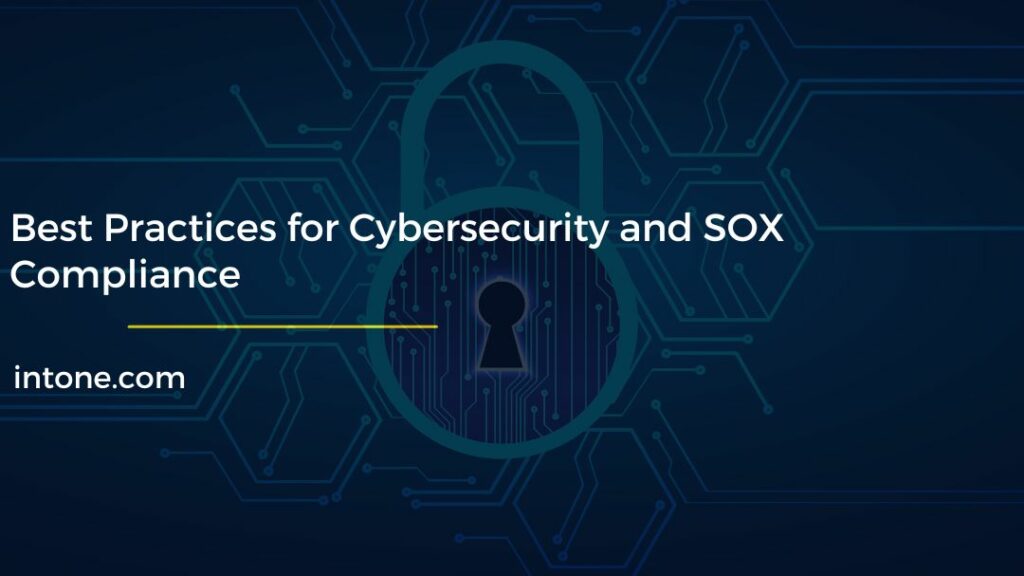Contents
As cyber threats evolve, strong cybersecurity practices are crucial for organizations subject to the Sarbanes-Oxley Act (SOX). These threats can compromise financial reporting and corporate governance. Integrating robust cybersecurity into SOX compliance is essential for regulatory adherence, protecting financial data, and building stakeholder trust. Meeting SOX cybersecurity requirements is a critical component of this integration. SOX Regulatory Compliance Services can help organizations navigate these challenges. Prioritizing cybersecurity enhances resilience against evolving threats while ensuring compliance and transparency.
Real-Time Incidents on Cybersecurity and SOX Threats
Risk Management
- EquiLend Ransomware Attack (January 2024): EquiLend, a securities lending platform, faced a ransomware attack that affected its services. While customer data was reportedly secure, employee data was compromised. This incident emphasizes the need for advanced risk management frameworks aligned with SOX compliance to prevent and mitigate such breaches.
Access Controls
- Tangerine Telecom Data Breach (February 2024): An Australian ISP experienced a breach due to compromised contractor credentials, exposing customer information from a legacy database. This highlights the critical need for role-based access controls (RBAC) and strict authentication measures to prevent unauthorized access to sensitive systems.
Data Protection
- Dropbox Sign Breach (May 2024): A threat actor accessed data including email addresses, hashed passwords, and multi-factor authentication details through Dropbox Sign. This incident underscores the importance of encryption and secure backup measures to protect financial and customer data.
How does Cybersecurity supports SOX Compliance?
- Ensure strong internal controls.
- Protects the accuracy and integrity of financial reports.
- Safeguards sensitive financial data from unauthorized access.
- Prevents legal and financial consequences of non-compliance.
Best Practices for Cybersecurity in SOX Compliance
Risk Management
-
- Conduct regular cybersecurity-specific risk assessments to identify vulnerabilities in financial systems.
- Establish a risk management framework aligned with both SOX and cybersecurity standards to address these risks.
Access Controls
-
- Implement multi-factor authentication (MFA) and other strong authentication methods.
- Adopt role-based access control (RBAC) to limit employee access based on job requirements.
Data Protection
-
- Encrypt sensitive financial data at all stages, both at rest and in transit.
- Ensure secure backup and disaster recovery procedures to prevent data loss.
Monitoring and Auditing
-
- Regularly monitor IT systems for suspicious activity and potential compliance breaches.
- Conduct audits of cybersecurity controls to assess effectiveness and SOX compliance.
Incident Response
-
- Develop and maintain an effective incident response plan to quickly address potential breaches.
- Train staff on incident reporting and response protocols.
Training and Awareness
-
- Provide continuous cybersecurity training to raise awareness of potential threats.
- Promote a culture of cybersecurity accountability and encourage employees to report security concerns.
Leveraging Technology
-
- Use compliance management software to automate tasks and streamline SOX reporting.
- Employ advanced technologies, like intrusion detection systems and firewalls, to bolster security measures.
Key Roles in Ensuring Cybersecurity and SOX Compliance
Leadership’s Role
Executive leaders, especially CFOs and CIOs, are essential in promoting a cybersecurity-focused culture. They set the tone for prioritizing cybersecurity and encourage awareness and accountability across all levels of the organization.
Building a strong partnership between finance and IT departments is critical for addressing cybersecurity challenges and maintaining SOX compliance. This collaboration integrates financial oversight with technical safeguards, boosting the organization’s overall resilience.
Understanding Cybersecurity Regulations
Leadership must be familiar with cybersecurity regulations beyond SOX, such as GDPR and HIPAA. This understanding ensures the organization meets all compliance obligations and protects sensitive financial data from breaches. Staying informed about these regulations helps leaders implement appropriate controls and policies that align with legal standards, safeguarding both financial integrity and reputation.
Conclusion
Strong cybersecurity practices are essential for maintaining SOX compliance and safeguarding the integrity of financial reporting. By adopting these best practices, organizations can build robust compliance frameworks to protect sensitive data and strengthen stakeholder trust. Investing in cybersecurity is not just a regulatory obligation; it is essential for long-term business sustainability and integrity. By prioritizing these practices, organizations can navigate compliance complexities while strengthening their defense against evolving cyber threats.

